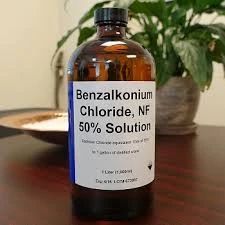polyacrylamide production
The Production of Polyacrylamide An Overview
Polyacrylamide (PAM) is a versatile polymer widely used across various industries, notably in water treatment, agriculture, and the oil industry. Its unique properties — such as high molecular weight, excellent water solubility, and the ability to form gels — make it an invaluable material for numerous applications. This article provides an overview of polyacrylamide production, its methods, and its applications.
Production Methods
The main method for producing polyacrylamide involves the polymerization of acrylamide monomers. This process can be conducted in several ways, including solution polymerization, suspension polymerization, and emulsion polymerization. The choice of method depends on the desired properties of the final product and its intended application.
1. Solution Polymerization This method involves dissolving the acrylamide monomers in a solvent, typically water, and adding a polymerization initiator. The process usually takes place at elevated temperatures to accelerate the reaction. The resulting polymer is then purified to remove unreacted monomers and byproducts. Solution polymerization is suitable for producing high molecular weight polyacrylamides.
2. Suspension Polymerization In this method, the monomer mixture is dispersed in a liquid medium along with inert materials. The polymerization occurs within droplets of the monomer, leading to the formation of polyacrylamide beads. This technique allows for better control over the polymer's properties and is often used in the production of granulated PAM for specific industrial applications.
3. Emulsion Polymerization This technique involves the polymerization of acrylamide in an emulsion system, where the monomer is dispersed in water with surfactants. This method results in a product with a smaller particle size and allows for higher solid content. Emulsion polymerization is particularly advantageous for producing high-performance polyacrylamide products.
Environmental Considerations
polyacrylamide production

The production of polyacrylamide does raise environmental concerns, particularly regarding the toxicity of acrylamide itself. Appropriate safety measures should be in place to minimize exposure during manufacturing. Additionally, it is essential to ensure that any residual acrylamide is eliminated during the purification process, as it is classified as a potential carcinogen.
Applications of Polyacrylamide
Polyacrylamide is best known for its application in water treatment, where it acts as a flocculant, aiding in the removal of suspended particles from water sources. It enhances the efficiency of municipal and industrial wastewater treatment processes, contributing to cleaner water supplies.
In agriculture, PAM is employed to improve soil structure and water retention, especially in arid regions. It helps reduce soil erosion, promotes plant growth, and increases crop yields, making it a valuable tool in sustainable farming practices.
The oil industry also utilizes polyacrylamide in enhanced oil recovery techniques. By injecting PAM solutions into oil reservoirs, operators can improve the flow of crude oil to the surface, thereby maximizing extraction efficiency.
Conclusion
The production of polyacrylamide is a complex process that offers significant benefits across various fields. Continued research and development in polymer technology could pave the way for even more applications, while ensuring that environmental and safety standards are upheld. As industries evolve and face new challenges, polyacrylamide will undoubtedly remain a key player in addressing these issues effectively.
-
The Power of Isothiazolinones in Modern ApplicationsNewsMay.08,2025
-
Flocculants in Water TreatmentNewsMay.08,2025
-
Flocculants and Chemical Solutions: What You Need to KnowNewsMay.08,2025
-
Flocculants and Chemical Solutions: A Growing IndustryNewsMay.08,2025
-
Essential Chemicals: Polymaleic Anhydride and MoreNewsMay.08,2025
-
Acrylic Polymers: Essential Solutions for IndustryNewsMay.08,2025





